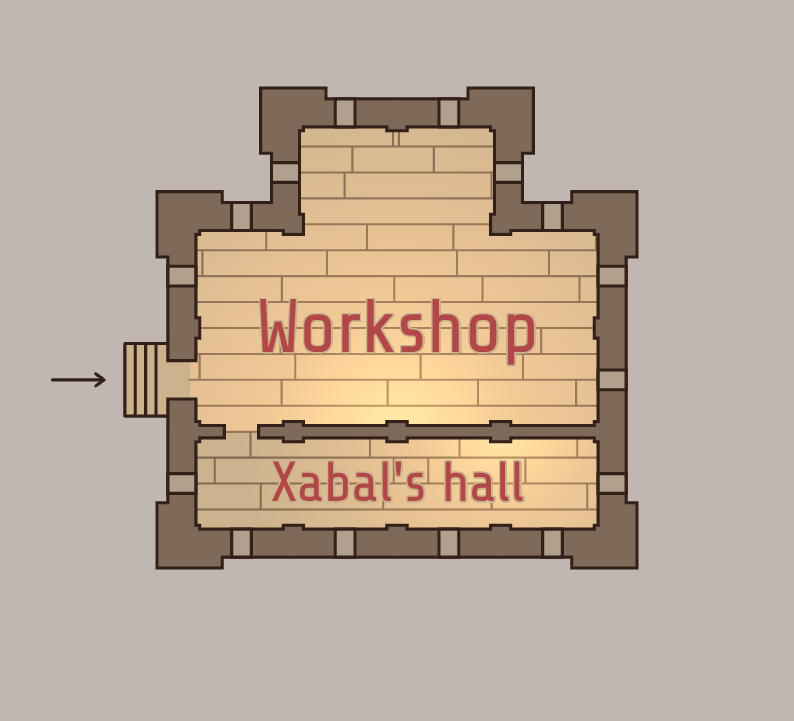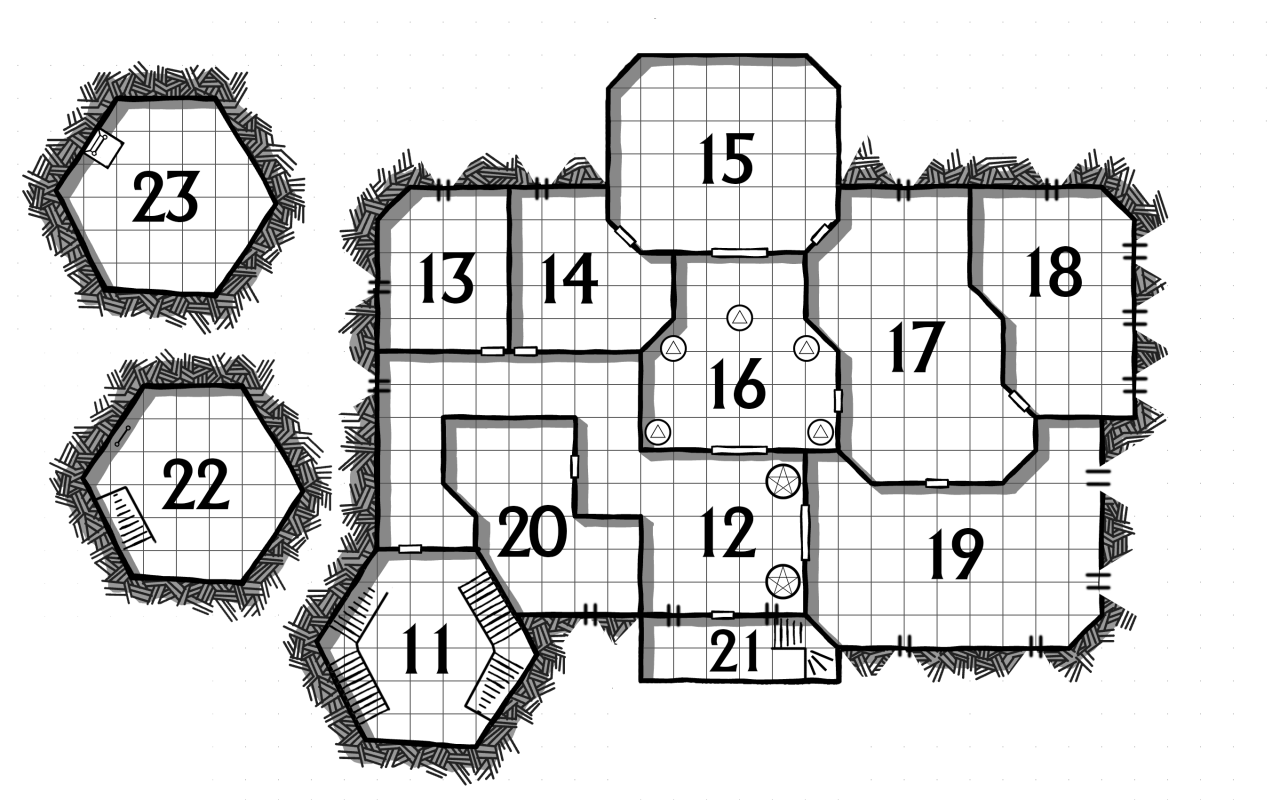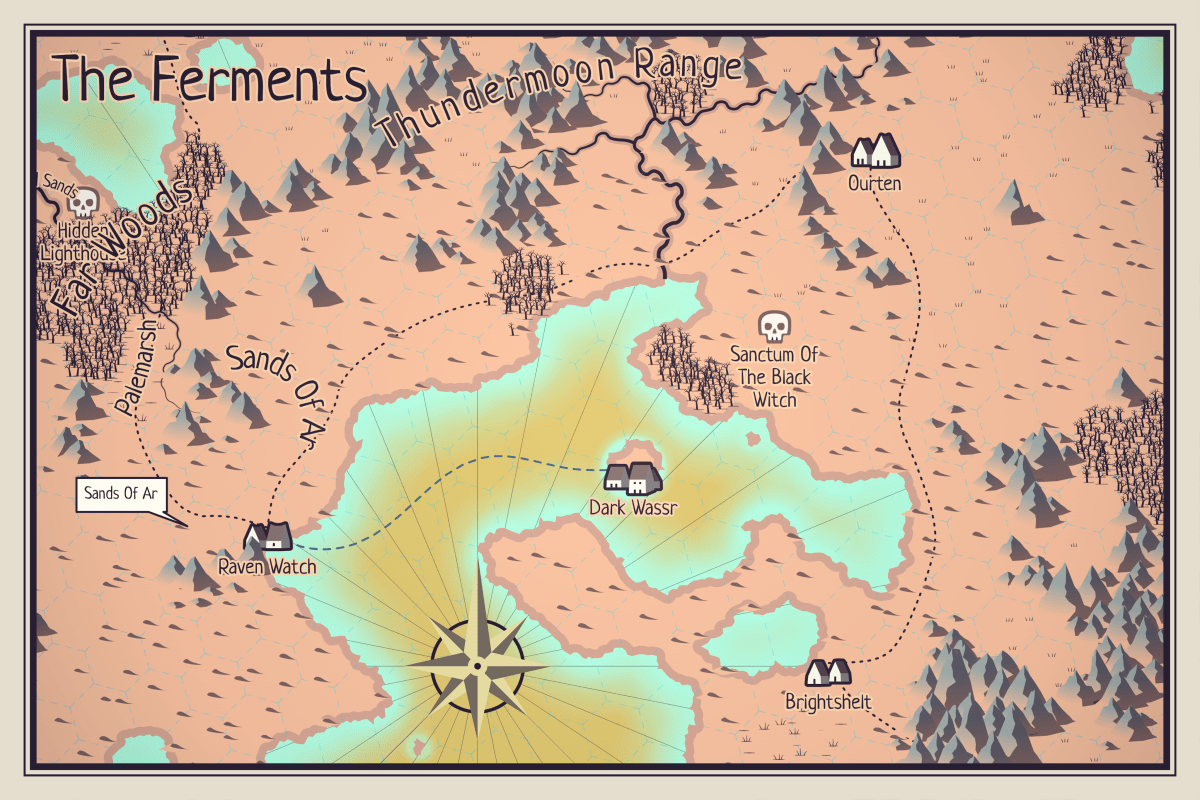SMOOSH JUICE
Essentials for Airships in D&D | Arcane Eye

Take to the skies! Discover airship history, mechanics, and free battlemaps to bring high-flying adventures to your D&D campaign.
Arcane Eye may earn a small commission from affiliate links in this article. Learn more.
Airships in D&D
Airships have been floating through D&D’s multiverse since third edition, appearing in the Arms and Equipment Guide (2003) with options like Hanggliders, Ornithopters, Dirigibles, and Zeppelins. While they weren’t the focus of that book, they laid the groundwork for future skybound travel.
In 2018, the Unearthed Arcana article Of Ships and the Sea teased expanded vehicle rules, including airships—but the system was never finalized. And while the D&D Beyond Basic Rules include an Airship entry, it only offers a skeleton of information: no rules for combat, upgrades, or crew roles.
It wasn’t until Keith Baker’s Eberron setting that the idea of airships in D&D truly took flight. In Eberron: Rising from the Last War, the lightning-powered vessels became iconic to the setting’s blend of magic and pulp-fantasy. But, while airships were mentioned plenty throughout the campaign guide’s pages, there weren’t any mechanics for airships provided.
Then there was 5e’s Spelljammer campaign setting, which included stat blocks for Spelljammers (ships that traverse Wildspace between planets). While this was the most fleshed out system we had seen so far, the actual mechanics of travelling in a ship or ship-to-ship combat were quite thin.
So, what if you want to take to the skies in your own D&D setting? Well, let’s take a look at the essentials for airships in D&D:
Airship Mechanics

Here are the tips I follow for making ship-based combat work in D&D, whether my party is in an airship, nautical ship, or Spelljammer:
Keep Crews Small
I typically prefer ship-t0-ship combat systems with small crews and simplified mechanics.
I know, I know. Ships in the days of yore took crews of dozens of sailors to function. But, as a DM, I find that incredibly hard to keep track of. And, while it may work for immersion, it just falls apart in combat.
For example, the ship in the D&D Beyond Basic Rules requires a crew of 10 and can have up to 20 passengers. That’s possibly 30 creatures to keep track of on one ship.
When I run a ship encounter, I have a Pilot, Captain, and Weapons roles that my players can take. Pilots steer the ship, Captains inspire the crew, and Weapons shoot stuff.
Choose One Encounter Style At a Time
Combat on airships usually takes two forms: Ship-to-Ship combat and Ship Boarding combat. Ship-to-Ship combat is done on a hexgrid where each hex is 10 feet.
Ship Boarding combat is on a square or hexgrid, where each square or hex is 5 feet.
Having a ship being boarded while there is ship-to-ship combat happening is extremely confusing to track and the mechanics just begin to fall apart.
If you’re going to have an exchange of cannon salvos or airship-based dog fight, try to keep everyone on their respective ships.
If you’re going to have a pirate ship attempt to board the party’s vessel, give them a couple rounds of Initiative in a ship-to-ship situation, then switch over to a ship-boarding encounter.
How Airships Work
Airships in D&D function as customizable vehicles with their own stat blocks, components, and combat options. Here’s a breakdown of how they typically work:
Basic Stats. Each airship has Armor Class, Hull Hit Points, a Damage Threshold, a size category (usually Huge or Gargantuan), movement speed (Fly Speed and Cruising Speed), and a turn radius that affects how tightly the ship can maneuver.
Components. Ships are made up of Components—things like Sails, Shields, Cannons, Thrusters, and a Hull. Each Component has its own AC and HP and can be targeted separately during combat. Components that reach 0 Hit Points gain a “Damaged” condition; if they take more damage, they become “Destroyed” and stop functioning.
Crew Roles. Just like a D&D party, airships need a crew. Pilots steer, gunners fire weapons, captains inspire the crew, and technicians repair components mid-battle.
Combat. Ships don’t take turns in Initiative like creatures. Instead, its crew can use Components as actions—firing a Ballista, raising Arcane Shields, or moving with Thrusters. Positioning matters, and the turn radius forces you to think strategically when maneuvering.
Crashing. If things go really wrong, airships crash. When that happens, both the ship and anything it hits take Bludgeoning damage based on speed and size. Gargantuan ships hitting terrain? That’s a bad day.
Damage Thresholds and Resistances. Airships ignore small amounts of damage thanks to their Damage Threshold. They’re also immune to conditions like Charmed or Stunned, and can’t take Psychic or Poison damage—because they’re, you know, ships.
All this turns an airship from a backdrop into a mobile fortress that can define the party’s entire playstyle.
Free Airship Battlemaps
Need some deck plans for your skybound skirmishes? You’re in luck—we’ve got a gallery of free airship battlemaps built for aerial encounters. Whether you’re fighting boarding parties, dodging spellfire, or prepping for a midair heist, these maps are fully gridded and ready to drop into your virtual tabletop.
Check out:
- The Verdant Warden: A research ship for long expeditions.
- The Stormpiercer: A sleek, nimble scout ship with a forward-facing Arcane Turret.
- The Sky Galleon: A versatile warship built for mercenaries, privateers, and skyfaring adventurers.









